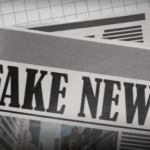‘To Be or Not to Be’, the opening line of a soliloquy by Prince Hamlet in the Shakespearen play Hamlet considers such vicissitudes as suicide and death.
In Marketing Election Watch we are considering when does the seemingly perfectly normal broadcast of a news event turn into ‘spot’ advertising – which given the reach of online portals, both mainline broadcast channels and social media channels, can have far reaching implications given the enormous amplification possibilities, and all for free.
So, do these broadcasts, in all their innocent ‘broadcasting’ help proliferate party messaging or otherwise?
MARKETING Magazine reached out to people across a whole spectrum of life and a general consensus – from derogatory to admiration – was that ‘To Be’ is simply what transpires in this day and age of online connectivity.
“It is inevitable that people would notice the banners and backdrops seen in news broadcasts of ceramahs, the announcements of ceramahs or simply the announcements of candidate line-ups,” was the opinion of a person having a drink standing outside a convenience store, when asked the question.
Unfortunately, he happened to be a journalist, so his opinion is tinted somewhat by professional concerns. So, we looked to a housewife next who, while admitting she was not big on social media, did watch news broadcasts online and on TV and agreed that the ever-present political banners did “stare you in the face”.
And indeed, they do and while backdrops on a stage are perfectly normal for any event, at this particular time, it could be construed as a ‘placement’ ad by some, just like in a movie scene where someone has a soda, and that soda is a bottle of Coke.
Brand owners have been known to pay for these spots and here we come to the meat and bones of this article – are we seeing our politicos embracing this online windfall?
Wholeheartedly, seems like, as can be seen on platforms like Twitter, LinkedIn, Facebook, Instagram and of course YouTube.
“Social media will definitely be widely used for paid advertising and will also be influencer-led, that is, by the candidates themselves,” was the response of Eileen Ooi, CEO of Omnicom Malaysia.
Yes, we are seeing this all the time, with candidates announcing ceramahs on social media, smiling broadly from campaign posters. But here’s the kicker! Their followers and supporters make comments and often as not, that banner is there – the amplification. For free. Or are those ‘subtle’ paid advertisements? We may never know what with so much secrecy, in general, surrounding paid advertising by political parties.
Yes, social media is definitely playing a role and a major one at that. As Beverly Hon, founder and director of PR agency Xcess Communication said: “I think they’re essential in these times and the different platforms reach out to different groups. How they use these platforms and whether effectively is another thing.”

Reaching out to different groups is the thing. How much of the ‘reaching out’ is positive is another story as there will inadvertently arise those who see humour in everything and have the wherewithal to portray exactly what may well be in the minds of the rakyat, seen below in this extract off social media.

So ‘To be or not to be’ could well lie in the perspective of the various parties involved and as a democratic society we are all most certainly entitled to our opinions – differing or otherwise – and have the privilege of voicing our opinions at the ballot box, soon!










